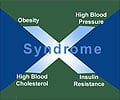New research on mouse model (Gcdh–/– mice) by William Zinnanti and colleagues at Penn State, Hershey, has provided insight into the mechanisms underlying injury and age-dependent susceptibility to Glutaric acidemia type I (GA-I), an inherited disorder similar to Huntington disease. Individuals with GA-I are unable to breakdown the amino acids lysine and tryptophan completely and hence their intermediates products accumulate in the brain. In most, but not all of the affected children, a period of normal development is followed by an irreversible brain injury triggered by a nonspecific illness. If children with GA-I reach 5 years of age without suffering brain injury they usually never show symptoms of the disease.
Gcdh–/– mice do not develop disease if lysine and tryptophan are excluded from their diet. Exposure to lysine in the diet caused brain damage in both young and adult mice, but the extent of the damage was much greater in the young mice. This was shown to be because lysine uptake is enhanced in the immature brain compared with the adult brain and so more intermediates of lysine degradation accumulated, thereby increasing the susceptibility to brain damage. Treating young Gcdh–/– mice with homoarginine, to limit brain uptake of lysine, and glucose, to limit lysine degradation, substantially decreased brain damage caused by exposure to lysine in the diet. Furthermore, brain injury was preceded by decreases in glutamate and GABA in the brain that could be monitored by proton nuclear magnetic resonance spectroscopy, providing hope that a way of monitoring children with GA-I to predict the onset of brain injury might be developed.Source-Eurekalert
GAN/C






